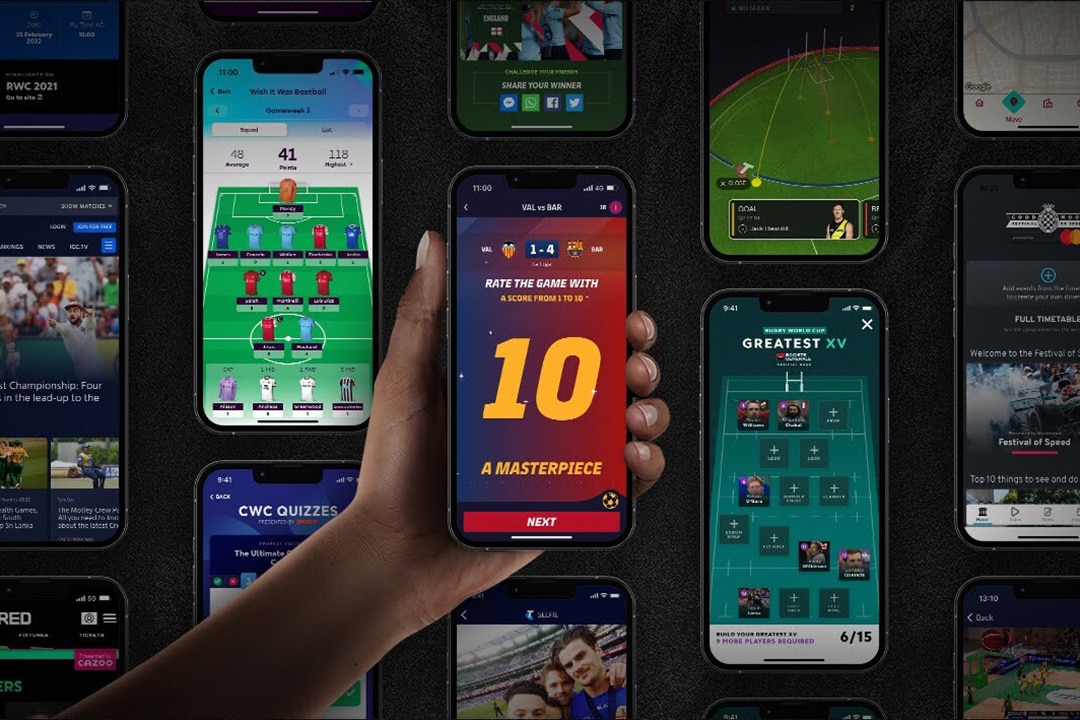Cutting Edge
Will low-power, ultra-compact, high-performance semiconductor technology change the future of the space industry?
Jan 17, 2020

In September 2019, the H-II Transfer Vehicle “KOUNOTORI 8” (HTV8) spacecraft was launched. Among the goods carried by KOUNOTORI 8 was Small Optical Link for International Space (SOLISS), a compact, long-distance laser communication system jointly developed by Sony Computer Science Laboratories (Sony CSL) and JAXA. This was the beginning of Sony’s diversification into space technology. To understand the significance of this milestone, we talked with Toshiyuki Hiroi, a Sony Vice President, and Naomi Kurahara, co-founder and CEO of Infostellar, a space startup Sony is connected with via the Sony Innovation Fund.
Profile
-

Toshiyuki Hiroi
Vice President,
R&D Center,
Sony Corporation -

Naomi Kurahara
CEO,
Infostellar Inc.
Satellite infrastructure is not as connected as you’d think
──First, can you tell us what Infostellar is doing?
Naomi Kurahara:Infostellar operates a service that enables our customers to share the ground-side systems necessary for satellite operations. What we call it—the business model that is—changes depending on the viewpoint of those using the service. However, it could generally be described as the provision of a sharing platform or ground system as a service.
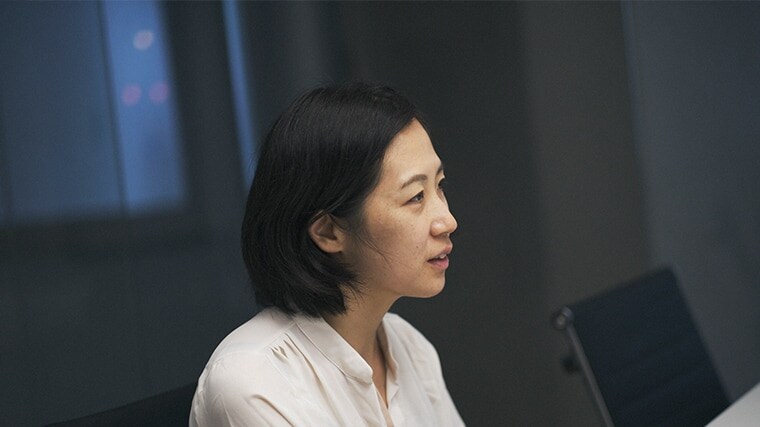
Usually, uploading and downloading data to and from a satellite requires a ground station. However, orbiting satellites have limited communication time due to their orbit. In Japan, only one hour per day can be secured for one orbiting satellite. This means with orbiting satellites or low-orbit satellites, it is impossible to establish a long communication time without a global network.
However, maintaining telecommunications facilities overseas is a challenge. As you might suspect, the installation cost is high, and there are also regulatory issues. For example, as with Japan, there are quite a few countries that do not issue radio licenses to foreign-capitalized organizations. It is difficult to create a network around the world because of these costs and regulatory issues. That is why most satellite operators currently have only one facility in their country and are carrying out minimum communication.
In order to solve this situation, I thought, “What if we could take advantage of the idle time of various operators throughout the world. Perhaps this would solve this problem.” That led to the launch of a platform for sharing ground facilities among satellite operators.

As I thought about it, I realized that this service would also solve problems for those in the business of providing antennas. Satellite operators borrow antennas from specialized ground operators. However, up until now, the telecommunications operators have only provided their own network. There are two major operators in Japan, but each has its own network and there was no cooperation between the two companies. There are no connections like that of the Internet on the ground, which allows carriers in Japan, the United States, and Europe to be connected via a network. The standard for the ground network did not exist in the first place. I think our service also helps solve this structural problem of the industry.
──Why isn’t it connected like the Internet?
Kurahara:Up until now, the use of satellites has been mostly limited to national and space agencies, and I think this may have been one of the reasons that hindered collaboration. Another reason is that there were few needs. Even at JAXA, one earth observation satellite is usually created in a single project, and it was rare to make more than one. However, in the 2010s, manufacturing costs came down and the concept of one mission using multiple satellites in a single project became feasible. At that stage, the need for a global network increased.
Toshiyuki Hiroi:Indeed, the difference in regulations from country to country is a huge problem. Are there other companies around the world that are doing business based on a concept like yours, Kurahara-san?
Kurahara:An American company called RBC Signals has a similar concept, and there are several companies that own communication equipment such as antennas and lease them out. In addition, AWS is another major player trying to enter this business.
──What future challenges do you envision?
Kurahara:There is no standard for communication yet, so we are working on individual interfaces for connecting to various facilities. That flexibility is also our advantage. Ideally we want to address such issues with software changes, but there will be cases where hardware must be changed. So, we are searching for ways to make hardware more flexible. Currently, we are proceeding in areas where we can leverage our flexible capabilities, but there remain areas yet to be addressed that will require more work. So, that is one of our future challenges.
Relationship between startups and intellectual property
──By the way, in what way are Sony and Infostellar collaborating?
Hiroi:Intellectual property. Sony has the Sony Innovation Fund, which is a corporate venture capital fund. As part of this, we received an inquiry from Infostellar for a consultation on intellectual property and we have been providing support with patent applications from the strategic point of view. Also, there are many engineers at Sony who are interested in satellites, and Infostellar has given us various opportunities for discussion.
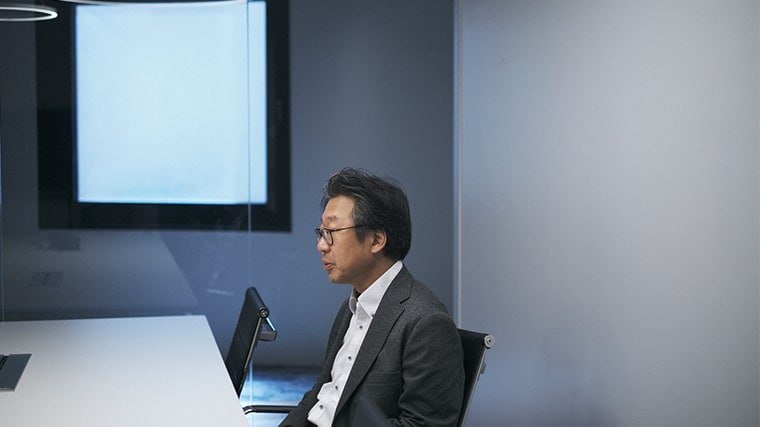
Kurahara:Given our business phase, our emphasis had been on technology development and sales, and we had tended to put off IP. I thought, “Hey, we need to start working on IP or we are going to be in a bind. But, what do we start with?” It was about that time we got advice from Sony that proved very helpful. For example, in December 2018, another company announced a service that we considered to be close to what we were doing. We had already received advice then, so it wasn’t too late, but I think it would have been quite bad if we hadn’t prepared to protect our IP. When I speak with other startups I know, usually a team of about 10 to 20 people, they say they have few people who actually focus on IP. Once I started working on it, I realized how important IP is, but the hurdles to start doing are high, so it was very helpful to get that kind of support.
Hiroi:Our relationship with Infostellar is also beneficial for us at Sony. In recent years, talks about space have come up, and when talking with JAXA, we begin to realize that there are many ways to make use of Sony’s technology. I think that in order to create innovation it is very important for different industries—not just in space—to interact with each other. In fact, we’ve always been involved in consumer electronics, so I would imagine those outside of Sony tend to think what we do is not a big deal because it’s just for consumer use. But in fact, Sony has a plethora of technologies that could easily end up being used in various fields including space.
Heading toward the coming “age of a trillion sensors”
──How has the need to use satellite data increased in recent years? What kind of genres of usage are there?
Kurahara:I have been tracking the number of satellites. Since 2015, about 200 to 400 satellites have been launched each year. This fast-paced increase is mainly due to the entrance of new players such as startups and universities, and I believe this trend will continue for a while.
In terms of what these new players are doing, they are of all descriptions, especially in the case of academia. In the case of startups, at the beginning the focus was on earth observation satellites. However, the last few years the focus has been on communications. It includes various types though, like store-and-forward, which is a low-speed communication method that allows delays, and IoT communication. In particular, I feel that there are many satellites being used at lower communication speeds than you might need, for instance, to stream a movie over the Internet.
──What are these low-speed communication satellites being used for?
Kurahara:Definitely IoT and M2M. My impression is that applications such as receiving sensor device logging data directly by satellite and then delivering it to the person who analyzes the data are on the increase.
Hiroi:I imagine that is where low power wide area (LPWA) communication technology is used, right?
Kurahara:Yes.
──So that is where LPWA technology is used.
Hiroi:Well, if you want to transmit data over great distances, you need LPWA technology. It is said that we are embarking on “the age of a trillion sensors,” which means sensors are being put everywhere on earth and in space. Once this happens it will be possible to collect sensor data and perform prediction via AI. This kind of efficiency and ability to anticipate the action to take before inconvenient things happen will be key to maintaining a sustainable society in the future.
To achieve this, data must also be collected where people do not live. It is often said that the mobile phone network has a population coverage rate of 98%, but in terms of the land area it covers only 60%. It is not economically efficient to build many base stations in remote areas. Therefore, communication that can reach such far, out-of-the-way places is necessary. For such places, it is not feasible to change batteries frequently, so power saving is required. There is also a physical limit to how far 1-bit information can be transmitted, so the amount of information must be reduced to communicate far away with limited power. Although there are such restrictions, in the case of sensors, it is possible to use AI on the edge side to reduce the amount of information, whereby making it possible to transmit data far away. I think this kind of technology will increase going forward. The problem is that, in order to cover vast mountainous areas where no humans live, you will need to install a base station at the top of each of the mountains, which is difficult to do in practice. So, if you really want to cover the whole area, you will need a satellite that can receive data directly. Speaking of distant transmission, Sony’s LPWA technology, called ELTRES™, has proved to be capable of transmitting data as far as 321 km using only 20 mW of transmission power.

Kurahara:The altitude of space stations is about 400 km, so that is pretty close.
Hiroi:Theoretically, we could go 3000 km, but I can’t say for sure because we haven’t tried that yet. There are many strange things that happen when you experiment. For example, in the case of long distances, the strength of radio waves varies. LPWA currently used in Japan is 920 MHz band, so it is not affected by rain. However, even though we did not change the location of the transmitter and receiver, the strength of the radio waves would change every few minutes. We don’t know the exact cause, but just like light, radio waves travel on the path which would take the shortest time, so fluctuation can occur in the distribution of electric field strength due to the refractive index distribution of the space changing slightly due to the influence of water molecules in the air or other factors. In the case of short distances, the refractive index shifts do not stack up, so the phase does not change much, but when you go over 100 km, the wavelength of a 920 MHz signal is about 30 cm long, so, just a slight delay can stack up, resulting in a phase change.
──So, you want to conduct communication experiments in space for reasons such as solving such mysteries?
Hiroi:Launching satellites costs money, so it’s not that easy. Our LPWA business started in 2019, and we are currently planning to expand the coverage, and yes, we talk with stakeholders about such ideas as using satellites to cover the whole thing.
Kurahara:LPWA is extremely focused on satellite operators. The other day, there was a story about LoRaWAN™*1 on a satellite. I think there are many operators that want to try it.
Hiroi:The most important thing for LPWA is how to transmit stably over long distances. In order to do so, the last few decibels will be critical to determining the outcome. In that regard, Sony’s ELTRES applies the know-how of signal processing, which we cultivated in TV tuners, such as error correction technology and modulation/demodulation methods. One of its other merits is that it is strong even at a very high speed.
Kurahara:In satellite communications, communication technologies from the 1970s are still being used. This is because failure is not an option in space, so if a technology is proven, companies will keep using it. In that regard, I think that various communication-related technologies should be applied in addition to LPWA.
Optical disc technology going to space
──In what form is Sony currently involved in space?
Hiroi:At Sony CSL, we are working with JAXA on a project of in-orbit demonstrations of the long-distance laser communication system. There is always signal interference and such when using wireless communication, as well as the problem of communication capacity. In that regard, optical communication may enable large-capacity, real-time data exchange between satellites and the ground. The experimental equipment was delivered to the International Space Station by way of KOUNOTORI 8 in 2019. Experiments will be starting soon.
──What is optical communication technology?
Hiroi:This is the optical disc technology that Sony has possessed for many years. Specifically, this experiment builds on the micro-level, high-speed tracking technology that has been used to read discs and involves projecting a laser beam to a satellite. When I first heard of this I was surprised, but in fact it works. Light provides for a great deal more bandwidth, so it may be possible to exchange large amounts of video data to the ground that is not possible using conventional wireless approaches.
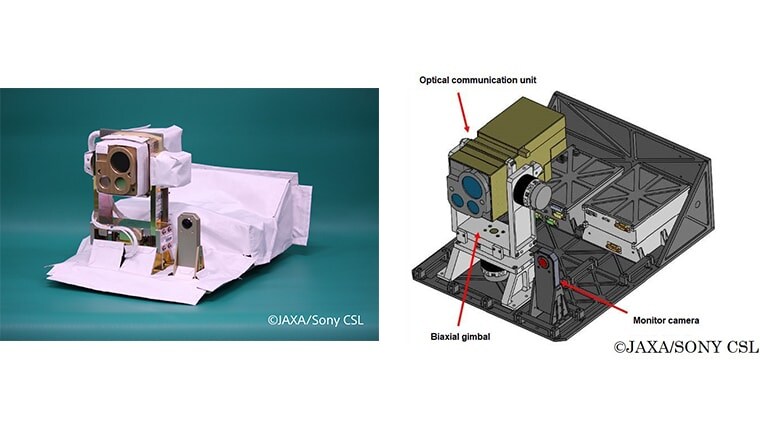
Although specific experiments in space for ELTRES haven’t been decided yet, LPWA does not have a very high data rate. So, I think that the combination of using LPWA for uploading sensor data from the ground and then using optical communication for downloading huge amounts of data to the ground at once is a good idea.
The significance of evaluating the performance of Sony semiconductors in space
Hiroi:We have another program underway that is separate from the joint project with JAXA. In the past, there was an “Invitation for Innovative Satellite Technology Demonstration Unit 2 Theme.” In response, we arranged to have a space performance evaluation for our small and low-power microcomputer board called SPRESENSE™, for which I was in charge of LSI development. Wearable devices and IoT devices require small, low-power, and high-performance processors. Unlike the typical semiconductor manufacturing process, the wafer used in the LSI of SPRESENSE employs a technology known as FD-SOI (fully depleted silicon on insulator), which allows LSIs to operate at an extremely low voltage.
FD-SOI has the property of being resistant to cosmic radiation. Radiation has energy, so when it hits, electrons are excited and cause malfunction. As a means to prevent this, we are testing in space the performance of the microcomputer board using FD-SOI.
If the size of a transistor is large, even if electrons are excited a little, it will not be affected much. However, as the transistor size becomes smaller, the bulk process often used in semiconductors will be hindered. In the future, a lot of low-orbit satellites and low-priced satellites will be launched, and there is a trend or desire to perform various processing with each satellite. As such, JAXA was also interested in this technology. By the way, SPRESENSE contains six microcomputers, GNSS, and high-res compatible audio. At first glance, you aren’t really sure if it is IoT or what it is.
Kurahara:Actually, my research theme when I was an undergraduate was “single event.” I learned the mechanism of semiconductor component errors and failures on the satellite side. So I am very surprised at the progress of those nostalgic technologies from back in day. It is amazing how small they are now.
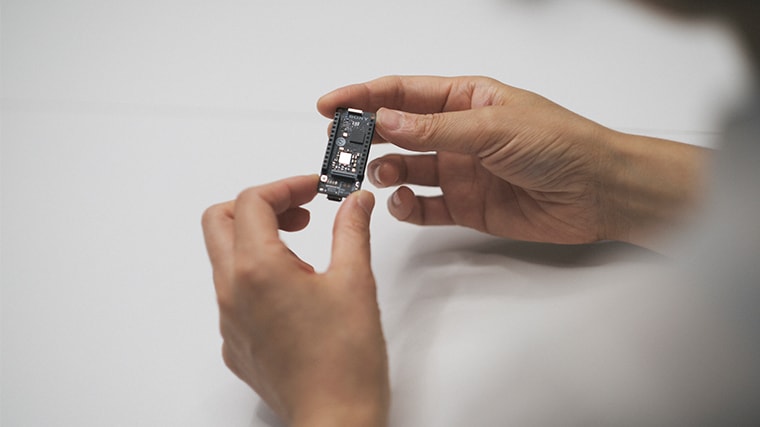
Hiroi:Nowadays the satellites themselves are small, and we can’t install a fan to dissipate heat in an environment without convection flow. Currently, there is no choice but to dissipate heat with blackbody radiation, and in the space environment, the temperature changes drastically, so the unit is surrounded by heat insulating material, and heat is trapped. For this reason, I think that low power consumption will become more and more important in the future not just in terms of battery performance but also it in terms of heat.
Kurahara:I heard that was always the dilemma. That is, “we want higher processing speeds, but the heat is the limiting factor.” Until now, computers installed on the satellite side were not that fast. Although those computers are about 20cm wide and quite thick, the processing power is less than that of a smartphone. Larger satellites may have liquid nitrogen or water cooling systems, but such systems also come with the risk of failure. So I think satellite manufacturers really want this kind of chip technology. Recently, there are universities that employ EPGA and such, but I have heard that thermal design is still extremely difficult.
Hiroi:I am happy that the know-how that Sony has cultivated thus far, such as miniaturization, can be deployed in space. I never conceived of these kinds of applications back in the day.
Kurahara:There is a tendency to think that space is a high-tech industry, and there are cases that actually use amazing high-tech, but overall, the technology on the ground is more high tech than that in space.
Real data from satellites becomes entertainment
──How do you think the space business will change as Sony enters the space industry and satellite data becomes more stable and richer?
Kurahara:I think it will make business easier to do and diversify opportunities. What was shattering about small satellites born at universities was that they let people realize, “Hey, we can do it with such a simple gadget.” They demonstrated that even a 10cm satellite, or components you’ve bought in Akihabara, can work just fine in space—the kind of thing that JAXA wouldn’t have been able to do. Once that happened, many people thought that they could do the same thing, and as a result, the number of players increased. If the number of players does not increase, then the industry will not expand. So, that was a very big factor. When technology barriers go down, people who have ideas and people who are strong in business can join in, expanding a world that was previously shaped by technology alone. I think that this phenomenon will accelerate as Sony technology goes into space.
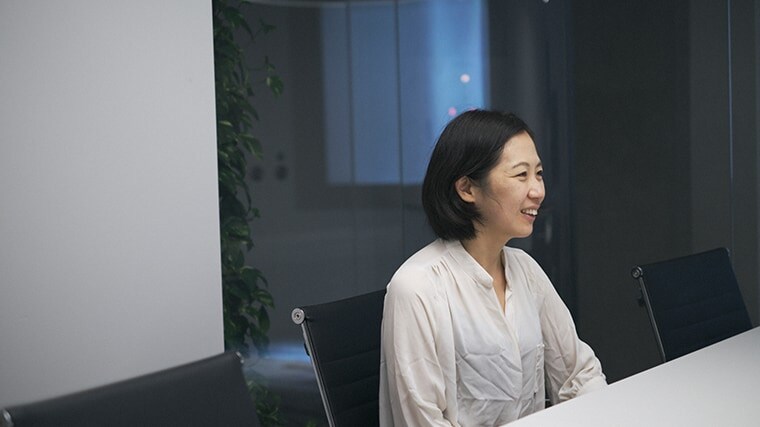
──What changes do you see in the area of entertainment?
Hiroi:At one point, I thought, “When will people’s behavior change?” I came to the conclusion that, “If the human heart is not moved, then nothing will change.” In that respect, I think entertainment is a great way to bring about kando (inspirational experience).
Astronaut Takao Doi once said, “When I lived in the space station and looked at the earth from space, I became strongly aware that ‘Earth is one!’ However, when I returned to the ground, there were all manner of wars, environmental pollution problems around the world, and so on.” After struggling to understand the paradox, Doi-san advocated for the significance of space travel, saying, “Everyone should have the chance to go to space.”
However, even today, only very few wealthy people can go to space. So instead, if you can provide kando through entertainment that allows people to view the earth objectively, we might be able to bring the concept of “one Earth” to the hearts of people, which might evoke changes in their behavior. I think that this could be very valuable for the realization of a sustainable society.
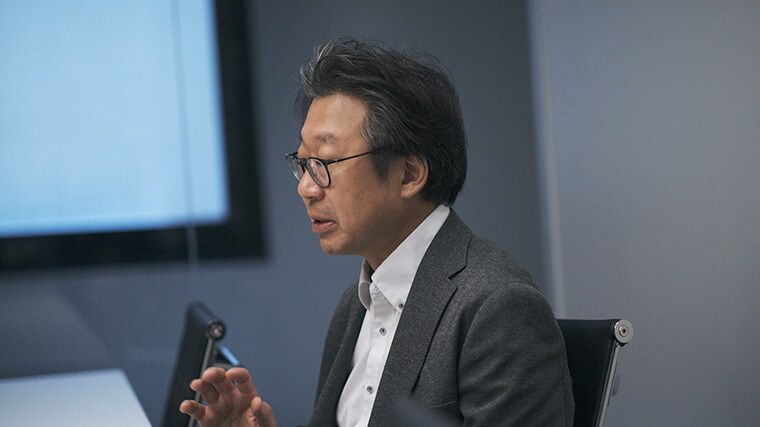
Sony intends to continue to be a company that provides kando to everyone. However, in the future, it will be important to collaborate with people from different industries as the form of kando further diversifies. In the coming era, we believe that various companies will come to work together to address social issues that cannot be taken up by a single company, each bringing its own expertise, sometimes competing and sometimes co-creating. While thinking about the role that Sony R&D should play in this realm, I hope Sony will provide new kando value as a result.
*1. A communication standard for IoT developed by LoRa Alliance™ members such as Semtech Corporation, a semiconductor manufacturer, and IBM. LoRaWAN™ is a trademark of Semtech Corporation.


